Deltoid Muscle
What is deltoid muscle?
- The Deltoid muscle is a broader, triangular shape shoulder muscle. The deltoid muscle is called based on the shape of the Greek letter ‘delta’ (Δ). The Deltoid muscle is situated at the rounded contour of the shoulder. It is also popular as the ‘common shoulder muscle. The whole deltoid muscle begins from the spine of the scapula up to the lateral portion of the clavicle. It passes inferiorly covering the glenohumeral joint on all sides & inserts into the humeral bone.
- The Deltoid is formed of acromial, clavicular & scapular spinal parts. The acromial part (middle fibers) abducts the arm, while the clavicular & scapular spinal parts play an important role in stabilization, ensuring a steady plane of abduction. Additionally, the clavicular part (anterior fibers) can work as a flexor & internal rotator of the arm, while the scapular spinal part (posterior fibers) can extend & externally rotate the arm.
Origin of Deltoid Muscle
- The Deltoid muscle starts from the anterior border & the neighboring floor of the lateral 1/3rd of the clavicle, the lateral border of the acromion process where four septa of origin are joined & the lower lip of the crest of the spine of the scapula.
Insertion
- The Deltoid muscle ends in the deltoid tuberosity of the humeral bone.
Nerve supply
- The nerve supply of deltoid muscle is by the Axillary nerve (C5 & C6).
Blood supply
- The vascular supply of the deltoid muscle is the thoracoacromial artery (acromial & deltoid branches), the profound brachial artery & the circumflex humeral arteries
Action
- The multipennate acromial fibers are stronger abductors of the upper extremity at the glenohumeral joint from starting to 90 degrees of range.
- The anterior fibers are Internal rotators & flexors of the shoulder.
- The posterior fibers are the external rotators & extensors of the shoulder.
Structure of Deltoid Muscle
- The deltoid has 3 functionally & anatomically distinct parts. The acromial part, sometimes also called the middle or central, is the largest & the strongest. It is a multipennate muscle. It arises as 4 intramuscular septa, which interdigitate with the 3 tendons at the insertion site (one each for the anterior, posterior & middle parts). The 4 septa are connected by short, strong muscle fibers.
- The clavicular (anterior) & scapular spinal (posterior) parts are both unipennate & converge directly onto the inserting tendon.
The Relation of Deltoid Muscle
- The deltoid is the most superficial muscle of the shoulder, thus it lies deeply only to its overlying fascia, muscle platysma, and skin. Due to its superficial nature, the deltoid can be easily observed & palpated.
- The deltoid overlies many numbers of other muscular structures: the rotator cuff muscles (supraspinatus, infraspinatus, teres minor, subscapularis), the pectoralis major & the tendon of pectoralis minor, as well as tendons of coracobrachialis, both heads of biceps brachii & long & lateral heads of the triceps brachii muscle. The deltoid also covers the coracoacromial ligament, subacromial bursa, bony structures (coracoid process & proximal humerus), & neurovascular structures (the axillary nerve & anterior & posterior circumflex humeral vessels) of the shoulder region.
The function of Deltoid Muscle
Synonyms: Abduction of the shoulder joint, Abduction articulation is glenohumeral
- The deltoid muscle (acromial part) is the principal muscle for the abductor of the arm at the glenohumeral joint. However, it can only do so, when the arm is already abducted beyond 15 degrees. This initial part of abduction is done by the supraspinatus muscle. The clavicular & scapular spinal fibers of the muscle lead the arm through the abduction movement.
- Together with the rotator cuff muscles, the deltoid muscle activates in the stabilization of the glenohumeral joint. When carrying heavy objects while the arm is fully adducted, the muscle will generate a line of force (static contraction) that prevents the inferior displacement of the glenohumeral joint. The deltoid also performs eccentric contraction when the arm is being downwards, or adducted. That allows adducting the arm in a properly controlled manner.
- The clavicular (anterior) fibers of the deltoid act along with the pectoralis major muscle to generate flexion of the arm during walking or running motions. These fibers are also activated during the internal (medial) rotation of the humerus.
- In contrast to anterior fibers, the scapular spinal (posterior) fibers of the deltoid act with the latissimus dorsi muscle to create an extension of the arm during ambulation. In addition, these fibers will helps in the external (or lateral) rotation of the humerus. This is very important from a functional standpoint as strengthening the posterior fibers of the deltoid muscle will help to offset the tendency of the shoulder to become internally rotated due to poor posture.
Clinical significance of deltoid muscle
- Adhesive capsulitis: This condition occurs when the capsule surrounding the shoulder joint gets thick & stiff. It might be causing shoulder pain, muscle spasms & stiffness. Another name for adhesive capsulitis is known as frozen shoulder.
- Axillary nerve palsy: The axillary nerve passes sensation to the deltoid muscle. Compression or damage to the nerve will occur during surgery or due to a traumatic injury or overuse of a crutch. These problems can lead to shoulder weakness or numbness, especially around the deltoid muscle.
- Bursitis: Shoulder bursitis is inflammation of the bursa (tiny, fluid-filled sacs) in the shoulders. The inflammation can make it tough to move the shoulder joint. It might also cause muscle irritation.
- Deltoid fibrosis: Repeated shoulder muscle injections may lead to fibrosis. This condition causes the muscle to halt repairing byself. You may experience deltoid muscle pain or loss of muscle strength & mobility.
- Rotator cuff tears: In rare cases severe rotator cuff tears damage or dislocate the deltoid muscle.
- Shoulder impingement syndrome: The shoulder muscles or tendons rub against bones. This friction, known as shoulder impingement syndrome, leads to joint pain & inflammation.
- Shoulder separation: A separated shoulder occurs when the ligaments tear between the collarbone & the shoulder blade. In severe cases, surgery may be required.
- Strains & overuse injuries: A shoulder strain is the re of overstretched muscle fibers. Strains will occur suddenly, or they might occur slowly over time due to repetitive overhead arm movements.
- Tendonitis: Shoulder tendonitis occurs when the tendons in the shoulder get inflamed. Tendonitis can cause deltoid pain or make it difficult for you to use the shoulder muscles or to move the joint.
Deltoid Muscle Stretching Exercise
- Dynamic bear hug stretch
- Standing chest and shoulder stretch
- Cross-body shoulder stretch
- Modified downward dog
Dynamic Bear Hug Stretch:
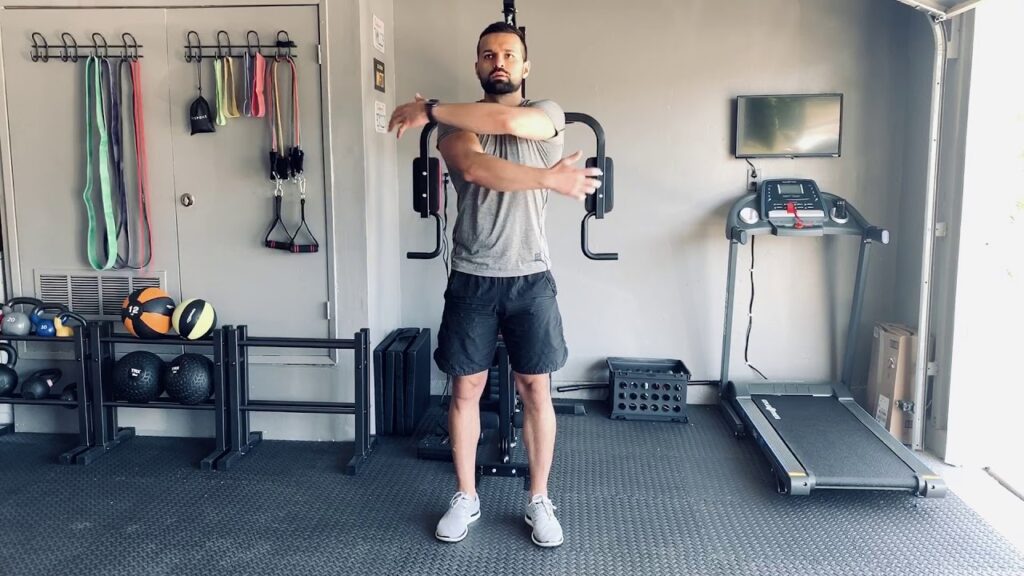
- The patient is in Standing tall with the feet should be shoulder-width apart, then contracting core muscles and posture tall and straight.
- Then Reach the arms out & wide, as though to do hugging someone.
- When the patient felt a light stretch in the front of the shoulders joint & chest, do the arms across the chest, then hug by the patient’s self-left arm on the top of the right, till the patient felt a stretch at the back of the shoulders joint.
- In the proper motion, swing the arms out wide again.
- Then Reach the end of the range of motion = ROM before the swing of the arms turns into a hug position, this time with the right arm on top of the left.
- This stretching is Continued for 30 secs.
- After that do the Rest, then repeat the 2 more rounds.
Standing chest and shoulder stretch:
- The patient is in Standing tall with the feet should be the hip-distance apart, so that contract core muscle & shoulders joint back.
- Must be précised on sustaining good posture.
- Then Reach back with both arms & clasp the hands combined.
- Take a breath in & as the exhale, raise the hands back to as high as comfortably till they felt a good stretch across the front of the shoulders & chest.
- Hold the stretching position & breathe deeply for 30 secs.
- Then Release & repeat 2 more times.
Cross-body shoulder stretch:
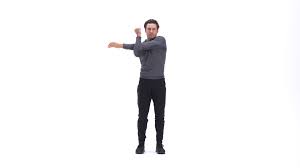
- The patient is Standing position in a tall with the feet at hip distance apart & the muscle of the core is engaged.
- For better posture: stack the ears over the shoulders, knees, hip & ankle joints.
- Move the right arm across the body at shoulder level, going past the left shoulder.
- Use the left hand to grab the opposite hand’s forearm.
- Gently pull the right arm closer to the body till the patient felt a stretch toward the middle of the right shoulder.
- Hold the stretching position & breathe deeply, for 30 secs.
- After that Rest, then repeat this exercise 2 more times before changing sides.
Modified downward dog:
- The patient is Standing tall behind a sturdy desk, table & chair.
- Keep the feet should be at them hip-distance apart.
- Then contract the core & roll the shoulders joint besides to make sure to be in a standing position with a better posture.
- Put the hands flat on top of the desk, then arms straight fully.
- The patient must be keeping the arms, back & legs fully in a straight position throughout this stretch position, only flexing at the hips joint.
- The patient takes a deep breath in & exhales, & begins walking the feet beside till the body forms a diagonal line.
- From here, tip to torso forward & press the hips joint back, and straighten the arms over the head as the patient move.
- When the patient felt a good stretch at the front of the shoulders joint & chest as well as through the hamstrings & glutes hold the position.
- Then the patient is taken to Breath deeply & try to relax into the stretch for 30 secs.
- Release the patient, then repeat 2 more times.
Anterior deltoid muscle stretching exercise :
To open up the front of the shoulder joint do behind-the-back stretches:
- In the Standing position with the foot about the hip joint -width apart, shoulders resting so that the glenohumeral joint blades are tucked down along with either side of the spine.
- Then Clasp the hands beside the lower back, then raise them far from the body, keeping the elbow joint extended.
- Raise it until the feel of a stretch, then hold the stretch for 15 to 30 secs.
- Maintain upright while doing this stretch – resist the urge to bend forward.
- If the patient has difficulty with clasping the hands beside the back, grab a towel & hold it between the hands.
- Do this stretching a total of three times.
For the anterior deltoid muscle stretch by the use of the doorway:
- The patient is Standing in a doorway with the foot about the hip joint -width apart.
- Place 1 palm on the doorway then slightly lower than the glenohumeral joint, then flex the elbow joint slightly.
- Then turn the body away from the straightened arm till the patient felt a stretch.
- Hold this stretching position for 10 to 20 secs, then repeat this exercise on the opposite side.
- The patient also used the stationary vertical bar/ a wall on the pole either than a doorway.
Anterior deltoid muscle strengthening exercise :
Isolate internal rotation to strengthen the anterior deltoid muscle:
- Lying on the back with the arms straighten out from the shoulders joint.
- Lift 1 hand so that the elbow joint is at a 90-degree angle & the forearm is perpendicular to the body.
- Then gently lower the hand till it is hanging/resting beside the body.
- Hold the stretching for a second, then return to the initial position.
- Do the three to four sets of 20 reps of this exercise, then repeat this exercise with the opposite arm.
- Precisely lower the arm as far as to go without pain.
- If you cannot do the full reps at the first, do as much as possible without pain, then try to add a more number of reps each week.
Lateral Deltoid muscle stretching exercise :
Basic side of deltoid muscle stretch:
- The patient is standing with the feet about the hip joint -width apart & places 1 arm over the chest with the elbow joint slightly flexing.
- Then grab the just above the elbow joint with the alternate hand & push the elbow joint nearer to the chest.
- Hold the stretching position for about 30 secs, then this exercise is repeated with the opposite arm.
- When the patient pushes slowly so that till a felt a stretch.
- Keep the glenohumeral joint relaxed with the shoulder blades tucked along with either side of the spine.
Pendulum motion to stretch the deltoid muscle:
- The patient is in a standing position with the feet about the hip joint – width apart, next to a table/countertop.
- Lean forward, placing 1 hand on the countertop/table for assistance.
- Then slowly swing the opposite arm forward & back like a pendulum, keeping the body still.
- Swing & repeat this moving the arm side to side, then into a circular motion.
- Turn around & do the same motions with the opposite arm.
- Do this two sets of the ten reps of this exercise on each side.
- Keep the back flat & glenohumeral joint back with the soft flex in the knee joint.
Place the arm around the back to stretch anterior & lateral deltoid muscle.
- The patient is Standing with the foot about hip-width apart.
- Place 1 arm beside the back & flex the elbow joint to 90 degrees.
- Then grasp the elbow joint with the other hand & pull the arm across the back towards the opposite glenohumeral joint till the patient felt a stretch.
- Hold this stretch position for 15 to 30 secs, then repeat this exercise with the opposite side.
- Complete this stretch three times on each side, making sure to breathe deeper as they hold the stretch.
- Keep the glenohumeral joint relaxed with the shoulder blades tucked down along with the sides of the spine.
Posterior deltoid muscle strengthening exercise :
Anterior deltoid muscle lengthening with the bridge position:
- The patient is in initial position in a sitting position with the knees joint flex & foot flat on the floor & hands beside the body & fingers pointing forward.
- The patient is inhaling & compress the foot & hands into the floor as they raise the hips to joint up into a bridge position with the torso & thighs parallel to the floor.
- Then extend the legs at a time without lower down the hip joint to get into the bridge position.
- Relax the neck & lower the head down.
- Hold the exercise position for 30 secs, then release it to a sitting position.
- When the 1st rep gets started, the patient is not able to hold the position for the whole 30 secs.
- Then Start with the 5 secs, then gently work to way up.
- The patient is Breathe slowly & deeper while holding this position, inhales through to nose & exhales through the mouth.
Posterior Deltoid muscle stretching exercise:
Crossover arm stretches:
- Relax the shoulder joint, pulling them back so that the glenohumeral blades fall along either side of the spine, then reach 1 arm across the body & grip it at the upper arm with the opposite hand.
- Then slowly pull this stretch as far as across the chest as possible until the felt of a stretch at the back of the shoulder joint.
- Hold this stretching for 30 secs, then relax for 30 secs.
- Repeat this stretching position with the opposite arm.
- Do this exercise 4 reps on each side for this exercise.
- Be sure to grasp the upper arm, not the elbow joint.
- Do not push against/put any compression on the elbow joint.
The sleeper stretch to activate the supporting muscles:
- The patient is lying down with the lower arm bent at a 90-degree angle so that the forearm is perpendicular to the body.
- Use the opposite arm to slowly push the arm down till the patient is felt a stretch.
- Hold this stretching position for 30 secs, breathing deeper, then relax the arm for 30 secs.
- Then repeat with the opposite side.
- Do the 2 to 3 reps & then change the sides.
- Hold this stretching slowly for 15 to 30 secs on each side.
Posterior deltoid muscle with the bent-over to horizontal abduction:
- The patient is lie down on the stomach on a bench/bed, allowing 1 arm to hang over the side.
- Begins with the arm hanging straight down, then slowly lift it to eye level & keeps the arm extended.
- Then slowly lower this position to the initial position.
- Do the three sets of the ten reps, then change & do the other arm.
- Then precisely raise the arm as far as without the pain.
- Once the exercise becomes too easy to perform, the patient grabs a dumbbell to add resistance & build more strength in the deltoid muscle.
- If the patient is not raising the arm above the torso, then try to raise it with the elbow joint flex & slowly work up to straighten the arm as the patient raises it.
Anterior Deltoid Raise:
- The patient is in the Standing position for the exercise with the foot hip-width apart.
- The patient is grabbing a dumbbell in each hand with the arms by the sides.
- Must be Keeping the arms extend then gently raising the weights directly in front of to glenohumeral joint height with the palms facing each other.
- Then Lower back down into the initial position & repeat this exercise.
Callahan Press :
- The patient is Stand with the foot hip-width apart.
- The patient is grabbing a dumbbell in each hand.
- Lift the arms out to the sides with the elbow joint flexed at 90 degrees.
- Upper arms should be in a parallel line with the shoulder joint & hands should point toward the ceiling.
- This is the beginning position for the exercise.
- Place the forearms in front of & turn the palms in toward the face.
- Then reverse the motion to exercise & return to the initial position.
- Press the weights of the dumbells directly above the glenohumeral joint & then reverse the motion of the exercise & back to the beginning position.
- This is a complete 1 repetition of the exercise.
Standing Arnold Press:
- The patient is in a standing position with the foot hip-width apart.
- The patient is grabbing a dumbbell in each hand just beneath to chin & palms facing you.
- Then compress the dumbbells overhead to rotate the palms out.
- The patient is paused at the top, then lowered to dumbbells back down into the initial position.
- Then rotate the palms backward toward you.
- Repeat this exercise two to three times.
Jerk Press:
- The patient is in Starting position with the foot hip-width apart.
- The patient is grabbing a pair of dumbbells in front of the shoulder joint, palms facing each other.
- This is the beginning position for the exercise.
- In the 1 explosive motion, press the weights overhead while jumping 1 foot forward & 1 foot back so that land in a high lunge.
- Step in the front foot back into the beginning position, bringing the weights back to glenohumeral joint height.
- Then Repeat this exercise two to three times.
Hammer Curl to Press:
- The patient is Stand with the foot hip-width apart.
- The patient is grabbing a dumbbell in each hand with the arms at the sides, palms facing each other.
- Keeping the elbow joint tucked into the sides, curl dumbbells up to the glenohumeral joint without moving the upper arms.
- Compress the dumbbells above the head till the arms are extended, keeping the palms facing each other.
- Lowering the weights back down to the shoulders, then lowering the arms all the way extended down to the sides.
- Repeat this exercise two to three times.
Bent-Over Lateral Raise [Reverse Fly]:
- The patient is in a standing position with the foot hip-width apart.
- The patient is grabbing a dumbbell in each hand at the side.
- Hinge at the hip joint, maintaining the back flat & allowing the arms to hang extended down with the palms facing each other.
- With the elbow joint slightly flex, lift the arms out to the sides till they parallel with the back.
- Gently lower the weights & repeat this exercise.
Sumo Circle Chop:
- The patient is standing with the legs wide & toes turned out 45 degrees.
- The patient is grabbing 1 dumbbell with both hands in front of the chest.
- This is the beginning position of this exercise.
- Push the hips back as gently lower into a sumo squat must keep the back straight.
- Push through the heels & extend the legs.
- This exercise begins on the right side.
- Circle the dumbbell around the head, rotating it around & back to the right.
- As they bring the dumbbell around to the front, continue this motion & pivot both feet to the right.
- Then flex both knees into a lunge & extended the arms to gently lower than a dumbbell in front of the knee joint
- Extended the legs & pivot back into the beginning position, bringing the dumbbell back in front of the chest.
- Repeat this exercise on the opposite side.

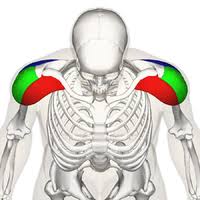
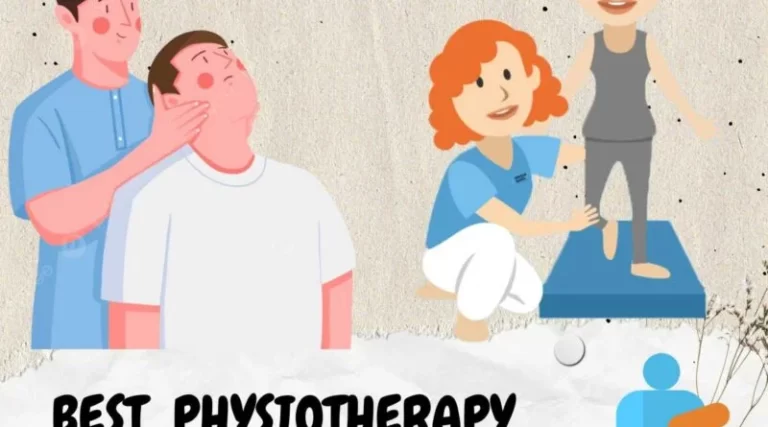

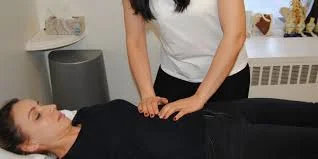
6 Comments